An Aye-write Guide To Showing Vs. Telling
An aye-write guide to Showing vs. Telling
I’ll bet that if you’ve ever taken an English class or a creative writing class, you’ll have come across the phrase “Show, don’t tell.” It’s pretty much a creative writing staple! Anton Chekov once said “ Don’t tell me the moon is shining. Show me the glint of light on broken glass.” In other words, showing should help you to create mental pictures in a reader’s head.
Showing helps readers bond with the characters, helps them experience the emotions and action more vividly, and helps immerse them in the world you have created. So “show, not tell” is definitely not bad advice - in certain circumstances. But it has its place. More on that later.
.-.-.
So How do I Show?
Dialogue
Thoughts/Feelings
Actions
Visual Details
So instead, of telling me “He was angry”, show me how his face face flushes red, how his throat tightens, how he slams his fist, how he raises his voice, how his jaw clenches, how he feels hot and prickly, how his breathing gets rapid, how his thoughts turn to static, etc.
Instead of telling me “The cafeteria was in chaos”, you could show me someone covered in food and slowly turning crimson, children rampaging under the feet of helpless adults, frenzied shouting, etc.
Handy Hint! Try to avoid phrases like “I heard”, “I felt”, “I smelled”, etc. These are still “telling words” (also known as filters) and may weaken your prose, as your readers could be taken out of the experience and you may lose their attention.
.-.-.
Is Showing Always The Right Thing to Do?
No! Showing is not always right and telling is not always wrong! It’s important to develop the skill and instinct to know when to use showing and when to use telling, as both can be appropriate in certain occasions.
So, “Show, don’t tell” becomes “Show versus tell”.
.-.-.
What is Showing and Telling?
Showing is “The grass caressed his feet and a smile softened his eyes. A hot puff of air brushed past his wrinkled cheek as the sky paled yellow, then crimson, and within a breath, electric indigo”
Telling is “The old man stood in the grass and relaxed as the sun went down.”
Both of these excerpts are perfectly acceptable to use in your writing! But both do different things, although their meanings are pretty much the same. The first example is immersive, sweeping, visual, engaging. The second example is much more pared back and functional. But both have their places in prose!
Telling is functional. Think about when you tell people things. You tell your children dinner is ready. The news reporter tells you there’s a drop in crime rates. Your best friend tells you she’ll be late because her car broke down on the way to yours. These are brief and mundane moments in everyday life.
So, do these deserve multiple paragraphs with sensory detail and action/feeling/thought for every little thing? Do you need to spend an entire paragraph agonising over a minor detail when there’s a sword dangling (physically or metaphorically) over your MC’s head? No. And I’ll explain why.
.-.-.
When To Use Telling
As before, telling is functional. It’s brief. It’s efficient. It gives a gist of a situation without getting bogged down in detail.
Showing is slow, rich, expansive, and most certainly not efficient!
Here’s an example of some telling:
“Years passed, and I thought of Emily less and less. I confined her to some dark dusty corner of my brain. I had to elbow my memories of her to the side. I was too busy with other things. Finishing school, then university a year later. Life was full and enjoyable. But then, one dark cold September night…”
You can’t show this example, unless you wanted to waste page after page of your MC waking up, going through everyday life, to get to the point your actual story started. If you do that, you will likely kill off any interest a reader would have in your novel and likely, your book itself.
.-.-.
Summing Up
Showing:
Should be used for anything dramatic
Uses thoughts, feelings, dialogue, action, and visual detail
Will likely be used more than telling
Telling:
Delivering factual information
Glossing over unnecessary details
Connecting scenes
Showing the passage of time
Adding backstory (not all at once!)
More Posts from Freakinfiction and Others


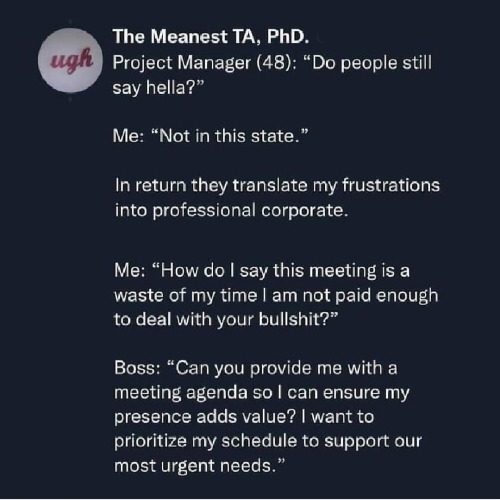

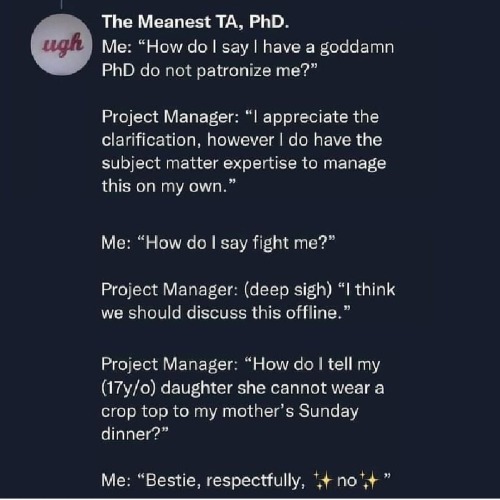




Writing Prompt #2949
"We...we survived?"
"What the fuck do we do now? I really thought we were going to end up in the die trying part."
Trope Talk #1: Enemies to Lovers: A Deeper Dive

Reports of my death have been exaggerated, but not greatly. While I was in bed for a week lately, roleplaying a Victorian invalid, I watched a YouTube doing a deep dive on the enemies to lovers trope. While it was really fun seeing her break down subtropes (hate to love, rivals to lovers, reluctant allies, villain romance, and more - all of which I adore), I found myself somewhat disappointed by her attempt to discuss the deeper issues surrounding the trope. Like, yes: a lot of people enjoy things in fiction that they would not enjoy IRL and mature readers CAN distinguish between fantasy and reality...but also the media we consume DOES shape us, not all readers ARE as mature as we'd like to think, and while this trope can be executed in a way that's not problematic, it can also be executed in a way that is. Even if we wouldn't all personally draw the line between toxic and healthy in precisely the same place, I think that line does objectively exist. So, here are some of the ways I've subjectively drawn that line in my personal writing and reading when it comes to this trope...
SOME WAYS OF DOING ETL RIGHT
1. Not everyone is going to agree as to what's healthy and what's not, and it's important to listen to others.
Some are going to be mad at me for loving this trope at all, and some are going to be mad at me for thinking that one still needs to exercise judgement and that not everything goes, but hear me out. As a writer, the harder you go with this trope, the more divided your audience will be. Given that we all tend to draw the lines in different places, I think that listening to each other and discussing the reasons behind our own preferences and choices is going to help all of us understand the stakes, avoid hurting or triggering readers who have trauma from toxic relationships, and extend grace to storytellers who don't make the same decisions we would. And we shouldn't be defensive that this is necessary. ETL is actually a fairly new and under-explored trope, which I think is part of why it can be so divisive, especially in a post-#MeToo landscape where a lot of us are starting to rethink the controlling men and helpless women in pairings we've been conditioned to see as romantic. Meanwhile, as an author with a deep love for this trope, I hope that posts like this will help more cautious readers to understand that writing about dark and spiky relationships doesn't necessarily mean romanticising abusive behaviour. Either way, I've benefited from listening in humility and I truly think my stories are better for it.
2. Remember that evil is not misunderstood.
If you'll be writing ETL, then you need to decide early on if the love interest is evil or just misunderstood, and be careful to write him accordingly and be honest about it. If the love interest literally goes around killing innocent people, deal with that. That's evil, that's not (just) a traumatic childhood. On the other hand, if the love interest is antagonistic because of a misunderstanding, but is a fundamentally decent person deep down, he probably wouldn't casually slap the heroine around or otherwise act like a jerk. One mistake I used to see a lot of writers making (less often these days) is trying to convince me that some loathsome jerk is just misunderstood. No, if he's been doing bad things, don't try to explain his guilt away. Confront it head on.
THE LAST JEDI was my gateway drug to ETL precisely because I'd never seen this trope done so beautifully and so uncompromisingly: when Rey is forced to face the fact that the boy she likes is unrepentantly evil, she refuses to join him, explodes him and gets out of there. Ben isn't ready to seek repentance yet; he's a proud, if wavering, villain. Because the movie was absolutely honest about the evil within Ben, I was able to genuinely hope Rey might confront that evil and exorcise it, instead of being gaslit into thinking it was all right.
By contrast, in the very Bluebeard-vibes kdrama MASK, the love interest believes he's responsible for the death of his late fiancee and is being manipulated by the villain into thinking he's criminally insane. As a result, he believes that he's going to kill the heroine, his new wife. Physical touch and dirt are both triggers for him, too, and what the audience sees as a trauma response comes across to the heroine as strong hostility. He tells the heroine he is going to kill her, and she believes him, but the truth is that he dreads it as much as she does. This is a really beautifully done form of misunderstanding. Just remember that to be believable, misunderstandings need to be resolved fairly quickly.
3. Enemies doesn't need to mean hatred or toxicity.
While hate to love is a valid subtrope - especially in contexts where the characters aren't literally trying to kill each other, like in a contemporary romcom - ETL does NOT need to involve toxicity. There's a difference between ordering the assassination of an enemy, versus strangling your wife to terrorise her into obedience; both are bad, but only the latter is classic domestic violence, which casts doubt on any "HEA". Enemies need not hate or even abuse each other to be at odds; they may feel deep personal respect for a worthy opponent, who just happens to be ideologically committed to an opposing cause and therefore duty bound to antagonise the other. Personally, these characters may like, respect, or even passionately love each other - but thanks to duty, they're obliged to thwart each other.
A favourite example of this is Nikita and Michael from the spy show NIKITA. The pair started out as master and pupil before becoming coworkers for a rogue government agency, Division. Now Nikita has gone rogue herself and is working to bring down Division. She knows that Michael is still hanging in there for several reasons - he still believes Division serves his country, he's been skilfully manipulated by the head of the agency, and above all he feels the need to protect Division's young agents who are increasingly exploited by them. Nikita still has respect for Michael because of all these things and because he's the man who trained her to be as awesome as she is - and because she's his best student, Michael returns the sentiment and still goes out of his way to protect her, even as he's trying to hunt her down. Midway through the season, Nikita tries to protect Michael by preventing him from taking out the man who once killed his family - at which point Michael's view of Nikita sours. But she never stops respecting him and he's still willing to work with her when necessary to protect his agents. Throw in some mad chemistry and you've got the ingredients for a perfect ETL situation - although it has some hostility from Michael's side, it's never without that solid core of care and respect for each other. This is what makes the romance work, of course; all romances need a good reason for the character to care about each other.
4. Remember that ETL is a fundamentally transformative relationship.
This builds on my first point. In ETL, unless there's a valid misunderstanding at play, there are probably moral/ethical differences between the characters. Thus, a huge part of your romance needs to be about resolving those differences, usually for the better. In other words (unless you're really into a corruption arc for the protagonist), the villainous/antagonistic character needs to genuinely repent and change, and we need that change to be demonstrated convincingly in story. At this stage, then, a good ETL story becomes about character growth, which means that it cannot be rushed. If the love interest has genuinely been evil, then he needs to change and prove it.
LOVE BETWEEN FAIRY AND DEVIL is a great example of a transformative ETL story. At the beginning of the drama, Dongfang Qingcang is a terrifying evil overlord who has frozen his emotions, killed his own father to rise to power, mastered hellfire magic and terrorised the three realms. As the story unfolds we do learn that there are some misunderstandings: Dongfang's father is the one who destroyed his emotions and forced him as a child to kill him, as well as instilling in him the fear that his people will be destroyed unless he conquers their enemies. But, this doesn't make Dongfang's villainy okay. Even after his emotions have been reawoken by our adorable heroine he still needs to realise that invading her homeland is not the right way to say thank you. By the end of the story we see that Dongfang is indeed a changed overlord. It takes a while, but it is believable.
5. Related, the characters should be a match for each other, especially when it comes to power and to morals.
I think a lot of the objections to ETL and villain romance pairings come from a perceived mismatch between the two characters: a weak person with a stronger person, or a pure and good person with a despicable manipulative blackguard. I think that it's always a good idea to balance this out. If your story begins with the love interest kidnapping your heroine to be his queen, why not let your heroine run a coup and replace him on the throne - right when he least expects it? The fact that your heroine is willing to get her hands dirty when it comes to this antagonist is not just delicious drama - it's also evidence that the two of them have more in common than they might think, and that in a longterm relationship she won't have any problems standing up to him. Alternately, if your heroine is going to remain pure and good throughout, she should probably be a match for the villain in terms of power, however that is measured in your story (and it can be a totally different sort of power than the villain wields). One of the most delicious things when watching any villain fall in love is finding the one woman whom he's absolutely helpless before.
I think Holly Black did this really well in the FOLK OF THE AIR trilogy. At first, Jude is a powerless mortal in the deadly fae court, and Cardan is the fae prince who delights in tormenting her. Jude proves herself far more cunning and ruthless than Cardan as she maneuvers the two of them into power as reluctant allies. It's clear that what Jude lacks in magic she makes up for in sharp intelligence and will to survive, and her ability to find a happy ending hinges on her ability to let down her guard and be vulnerable to Cardan. On the other end of the scale, Beauty and the Beast in most of its incarnations is about two kind people who want different things for sympathetic reasons, so that even though Beauty is held captive by the Beast we can understand the Beast's desperation to break his curse (and the Disney animated classic makes his motivations even more sympathetic by imposing a rapidly narrowing window of opportunity in which to do so). The Beast is truly gentle, and Belle is just spirited enough to snap back at him when he snaps at her. Both these stories work because the lovers are fundamentally a match.
6. Be creative.
There are all sorts of ways to create that delicious see-saw between "I adore you" and "I am going to kill you". The kdrama THE MASK, as mentioned above, uses the hero's mental health in an incredibly respectful way to create a sense of antagonism. The kdrama FLOWER OF EVIL does something similar. In Megan Spooner's absolutely incendiary SHERWOOD, there's a scene where the love interest goes from nearly killing the protagonist to tenderly embracing and caring for her within the very same chapter. Normally this would be the red flag to end all red flags, but it doesn't work that way here. How did Spooner manage it? Simple. The love interest doesn't know that the outlaw Robin Hood, whom he's trying to capture, is actually the same person as Maid Marian, the fair lady he's in love with - and when a quick costume change takes our heroine from one persona to another, the love interest's behaviour changes too. The emotional rollercoaster is real - but only for her.
7. There doesn't need to be a HEA.
I know, a lot of you are going to be up in arms about this, but it's true. Sometimes, especially in a straight up villain romance, the villain shouldn't get the girl. Maybe that's because she wants someone else, maybe it's because he's too manipulative and evil to be convincing as a long term relationship. But, let me frame it like this: why limit yourself just to writing the viable romances? There's a lot of good fun that can be got out of unviable romances too. You may not feel comfortable settling down with the villain, but that doesn't mean he can't be kissed :3
For example, in THE RINGS OF POWER the showrunners did something I never expected and gave Sauron himself a little crush on his greatest nemesis, Galadriel. The final episode, as he revealed his true identity and did his level best to manipulate her into joining him to rule Middle Earth, put joy into the souls of fangirls everywhere. It also caused a whole lot of people to clutch their pearls for some reason which remains opaque to me. After all, Tolkien was the man who wrote Eol, Maeglin, Wormtongue, and that moment when Morgoth himself was perving on Luthien Tinuviel. That aside, this is never going to be a viable match. Galadriel is married and hates Sauron's guts and Sauron is still a manipulative snake whose plans for healing Middle Earth involve him ruling as its lord and master, hopefully with Galadriel at his side. Galadriel doesn't fall for it for a second, which is one of the very things that makes this kind of story so incredibly satisfying to me. The fact that she won't succumb to his manipulation and temptation is incredibly empowering. As in THE LAST JEDI, the ball is in Sauron's court as to whether he changes to deserve her. And of course he won't - not just because he goes on to become the Lord of the Rings of Barad-dûr but more importantly because he never loved Galadriel for who she is but because of the way she made him feel, powerful and purposeful.
Not all villain romances need to end this way, of course, because some villains are capable of change. I think this is what makes Reylo viable where Haladriel is not. While Sauron and Galadriel each appeal to the EVIL in each other, Rey appeals to the good in Ben; he meanwhile desires the Light in her. This is why her refusal does ultimately prompt him to change, although of course the story's resolution was massively bungled in THE RISE OF SKYWALKER.
8. Love should be what the villain needs - but not what he wants.
It's hard to make absolute rules when it comes to any artistic choice, but this is probably the closest I come when dealing with this trope: because there should be consequences for the love interest's misdeeds, especially when it comes to the heroine. I call this the POTO rule: if the love interest wants the heroine romantically or sexually abuses her, he should not be rewarded by getting her. Enemies to lovers may fight over anything by any means, but not over romantic or sexual possession of each other. If the villain becomes a villain in order to possess the heroine, then a HEA for them involves giving him exactly what he wanted and thereby justifying his bad behaviour. Mind you, this doesn't mean the love interest can never want the heroine on some level; if he did not then this would not be a romance. We're talking about his most fundamental motivation and his most important story goal. She should not be either of them; she should be a distraction, an impediment to them.
This is simply good writing sense. Enemies to lovers normally implies a positive change arc for the love interest. Every good positive change arc involves a character who Wants one thing, say, to rule the world; but Needs something totally different - the capacity to make peace through compassion, say. Such characters may or may not get what they Want, depending on how good it is for them and the people around them, but they'll always get what they Need. This is why I think ETL works best when the heroine herself is the thing the antagonist doesn't know he Needs. As an enemy, and even more so if he's a villain, he's likely to be unscrupulous in getting what he Wants, and he shouldn't get her for the same reasons that characters often don't get what they Want. Think about it: the villain probably needs some hard consequences for what he's done. He can get them, *and also get the girl*, but only as long as the girl isn't the motivation for his crimes.
{How does this fit with the "stolen bride" genre of story, usually a fairytale? Do I disapprove of those on principle? Mm, no. If the bride was stolen primarily because the kidnapper claimed to have a romantic or sexual attraction to her, I might object. But there's usually some other motivation. He wants to break a curse; he wants to annex her kingdom; he wants to keep her out of his enemies' hands; he might have been ordered to marry her by someone he dares not cross, or bound by an ancient custom; in any case he ought not to be personally motivated to control or possess her. This is one of those grey areas where lines blur and it's wise to listen and be careful because so many real women have been trapped in marriages to real live villains; but the thing is very doable under the right circumstances.}
I call this the POTO rule because it was inspired by THE PHANTOM OF THE OPERA. In this story, Erik is obsessed with Christine to the point where romantic and sexual possession of her drives everything he does. He kills, manipulates, and gaslights everyone at the Paris Opera in an attempt to win Christine's heart, and ultimately he's willing to threaten to kill the man Christine truly loves in order to get the thing he Wants: Christine's hand in marriage. Now, I know a lot of you ship this pairing and I'm not going to scold you for it; maybe you ship them the way I ship Haladriel, loving the relationship without thinking it should end in a HEA, or perhaps you think Christine can fix Erik through some genuinely transformative plotline, or maybe you just want Erik to get what he wants even though it's messed up, and whatever it is I hope you have fun with it. But personally, from the perspective of a published author with a sense of responsibility to my readers, I really think the story ended in the best possible way. Erik doesn't get what he Wants (Christine) but he does get what he Needs (a transformative moment of transcendent compassion that enables him to act in a truly loving manner, by letting Christine go).
So, most of the time, I think it's wisest if the heroine is what the love interest doesn't know he Needs. Again, LOVE BETWEEN FAIRY AND DEVIL does this SO well. Dongfang Qingcang doesn't have time for love - emotionless and too busy Evil Overlording, he's never been in love before. So, when he's saddled with an adorable, dimwitted flower fairy, he can't wait to break the spell that links them together so that he can kill her and get on with his villainous plans. When her emotions begin to infect him, he can't help falling in love with her, even though he fights it every single step of the way. She's absolutely not what he Wants, but she is everything he Needs to thaw his frozen heart and teach him to act with compassion and empathy. Even though he spends much of the series planning to kill her, the HEA doesn't strike me as being Problematique the way that an Erik/Christine HEA would be - because a HEA with Orchid represents the moral growth that Dongfang needs, rather than the selfish desire he wants.
9. Maybe the villain's HEA is with someone else.
This doesn't mean a villain is irredeemable or shouldn't get a HEA. It just might mean that his HEA is with someone else. (Unless he's actually a rapist. Then just light the man on fire.) Erik shouldn't get Christine because he's done so much evil in order to possess her. But, once she's broken through to him to show him compassion, he might be ready to learn to love and to make amends for his past crimes...perhaps with someone else.
This was a huge part of the inspiration for the character of Vasily in my Bête Epoque stories. He does something which traumatises the heroine so much, there's no realistic HEA for them. Like Christine, she forgives him anyway, even in the midst of betrayal. And like Erik, he finds he's unable to go through with his villainous plans. She gets her HEA with somebody else, but I found myself with this incredibly compelling character whom a lot of people were pulling for. Vasily has already learned a huge lesson through having loved and lost my first heroine - so when he meets my second heroine, even though in a lot of ways he's still a treacherous monster, he's able to start afresh, and do better, with someone far more resilient who holds far greater power over him.
10. Individual characters will need individual things.
Finally, I think it's necessary to use judgement based on the individual characters and what they need. This is another reason why it's so difficult to make hard and fast rules here. For instance, I said that if the enemy sexually assaults the heroine he should forgo any hope of a HEA with her. But I think we've all seen romances that involve, say, some dubiously consensual kissing, which we can understand the kissee forgiving. By the same token, the act which disqualifies my character Vasily from his first HEA is not sexual assault but something which is coded that way within the story world, and experienced that way by the heroine (vampire bite). The fact that it's not literally sexual assault is what makes it possible for Vasily to get a romantic second chance, but the fact that it is figurative sexual assault is one of the main things that decided me against a HEA the first time. So, I think that whether you're a writer or reader, it's important to exercise judgement based not just on the things that are obvious, but also on less obvious things like the characters' specific needs, the thematic symbolism of the story world, and more.
--
So those are my best ETL writing guidelines - and again, this is only what works for me! I think it's really hard to make hard and fast rules for any artistic work, but from thinking about what works for me and what doesn't, these are some of the lines I've drawn for myself. If you're reading this, I hope it provokes some helpful thoughts :-)
Do you have any good words for pain? (Hurt for example) Like being in pain or exclamations of pain (ouch for example)
Pain—unpleasant bodily sensation; mental/emotional distress or suffering
Ache - a usually dull persistent pain
Affliction - a cause of persistent pain or distress
Agony - intense pain of mind or body; anguish, torture
Anguish - extreme pain, distress, or anxiety
Bruise - an injury involving rupture of small blood vessels and discoloration without a break in the overlying skin; an injury especially to the feelings
Burn - to produce or undergo an uncomfortable or painful sensation like that of being injured by fire
Chafe - to make sore by or as if by rubbing
Clonus - a rapid succession of alternating contractions and partial relaxations of a muscle occurring in some nervous diseases
Colic - an attack of acute abdominal pain localized in a hollow organ and often caused by spasm, obstruction, or twisting
Cramp - a painful involuntary spasmodic contraction of a muscle
Deleterious - harmful often in a subtle or unexpected way
Discomfort - mental or physical uneasiness; annoyance
Distress - pain or suffering affecting the body, a bodily part, or the mind; trouble
Fester - to generate pus; putrefy, rot;; to cause increasing poisoning, irritation, or bitterness
Gripe - a pinching spasmodic intestinal pain—usually used in plural
Inflamed - to cause inflammation (i.e., injury that is marked by capillary dilatation, leukocytic infiltration, redness, heat, and pain) in (bodily tissue)
Lancinate - pierce, stab, lacerate
Malaise - a vague sense of mental or moral ill-being
Misery - a circumstance, thing, or place that causes suffering or discomfort
Noxious - physically harmful or destructive to living beings
Pernicious - highly injurious or destructive; deadly; (archaic): wicked
Prickle - a prickling or tingling sensation
Sore - a source of pain, distress or vexation; affliction
Spasm - an involuntary and abnormal muscular contraction; a sudden violent and temporary effort, emotion, or sensation
Sting - a wound or pain caused by or as if by stinging (sharp or piercing)
Suffer - to endure death, pain, or distress
Throb - to pulsate or pound with abnormal force or rapidity
Travail - a physical or mental exertion or piece of work; task, effort; agony, torment
Twinge - a sudden sharp stab of pain
Woe - a condition of deep suffering from misfortune, affliction, or grief
Exclamations of Pain
ouch, boo, ow, aw, woe, shucks, ay, rats, yuk, sheesh, alack, tush, pooh, yuck, wirra (Irish), phooey, alas, tsk, pshaw, bah, humph, tut, pish, ho hum, faugh, fie
Hope this helps with your writing. Do tag me, or send me a link. I'd love to read your work!
You know what, since I’m thinking about it anyways, let’s talk formalwear accessories. Most of these are traditionally menswear but a bit of gender fuckery is good for the soul, and frankly most of these are about making your mass-produced clothing fit and lay properly without having to go to the tailor.
Shirt stays: these go around your thighs to hold your shirt down, so that it stays smooth and tucked in. They’re usually elastic, with 1-3 clips, and if you wear skirts frequently this is a GREAT way to make sure your top doesn’t ride up. The clips will be visible if you’re wearing something tight, so loose pants or skirts are where these do best. There’s also an insane version that clips to your socks, but that is for lunatics. If you wanted, you could also use one of these clips to hold up thigh-highs.
These do a great job of smoothing and narrowing the waist area by keeping your shirt from bunching there.


Sleeve garters: usually metal, leather, elastic, or silk. These are usually worn with button-down shirts to adjust where your cuff falls on the wrist or hand. They’re properly worn on the upper arm, and you pull the fabric of the sleeve above the garter until you cuff is where you want it. Because this creates a puff of sleeve at the bicep, it also broadens the appearance of the shoulders. It’s great if you’re working with your hands or if your sleeves are often too long for your preference.
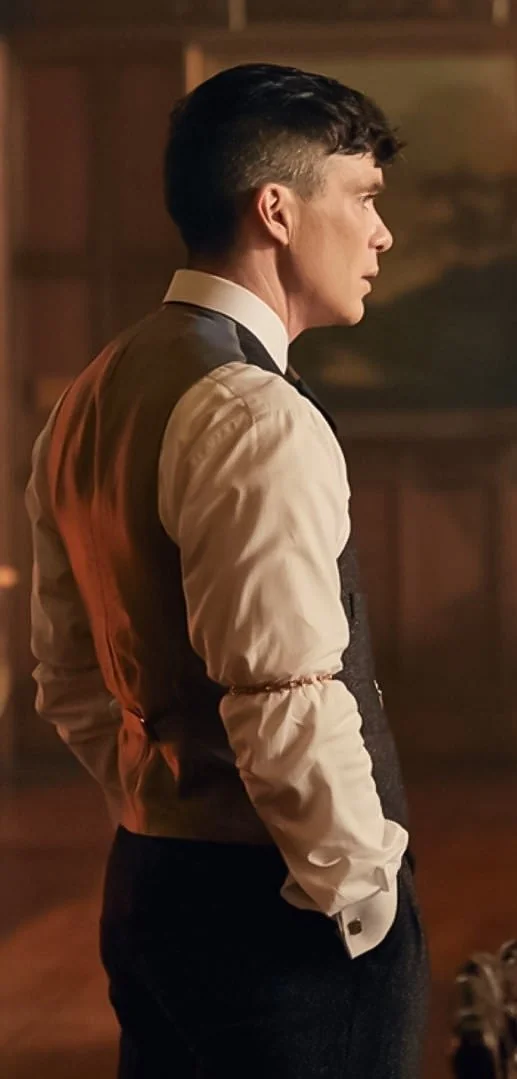

Waistband clip or belt adjustment clip/buttons
Three different ways of tightening the waistband of a pair of pants or a skirt. You’re not going to get more than an inch or so tighter without weird bunching, and for most of these you’d want them to be hidden under a shirt or jacket, but they do the job if that’s something you’re having issues with.
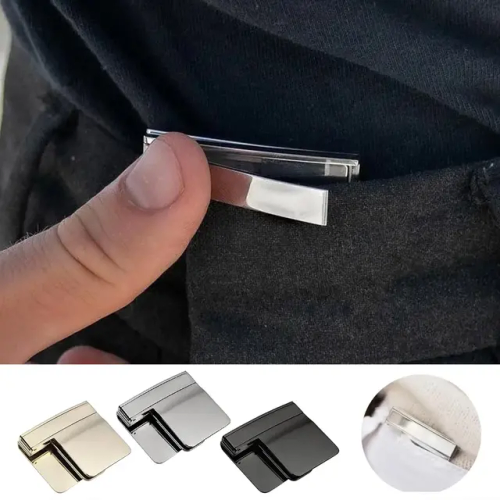


Collar pins: There are so many fun ones out there, both with and without chains. They’re not terribly practical, though the slight weight may help keep your collar where you want it. Also consider collar tips, which pin (surprise) to the very tips of your collar points.


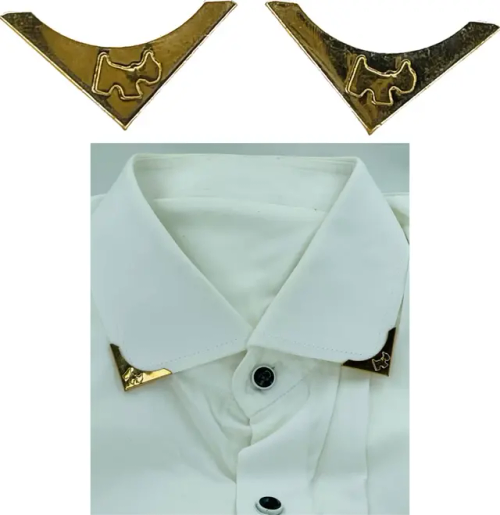
Sweater clips/guards: meant to hold your sweater or cardigan mostly closed. Great if your cardigan doesn’t button, or if you don’t like it to be buttoned all the way.
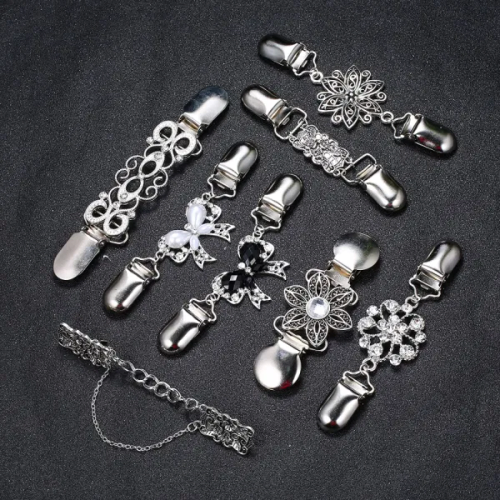
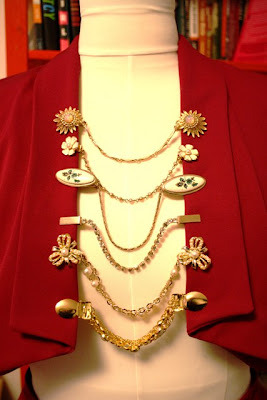
There’s tons of other stuff out there like this–etsy is a great place to find this stuff. A lot of these are old solutions to the very modern problem of mass-maufactured clothes not being as one-size-fits-all as advertised, but they’re also a fun way to put a bit of personality into businesswear.


We need more images like these i think


Something that just crossed my mind
honestly people who are insufferable about “the prank” or whatever can eat my entire ass because everyone crucifies sirius for telling snape how to get past the whomping willow but i’ve never seen anybody acknowledge what a fucking idiot snape was for meddling and willingly following somebody he assumed to be a werewolf inside a tight passage under a tree that could murder you during a full moon. what was the little bitch even trying to achieve by following remus? we know from his flashback that he had a hunch about remus being a werewolf, then he was told from a guy he hated and who hated him back the way to get past the tree and actually did what sirius said during a full moon? i’m sorry but that’s just being fucking stupid. i’m like 97% sure sirius did not even expect snape to do what he said because why on earth would he do that and if he had actually died that would have been well deserved because god knows the amount of times harry almost got himself killed by doing dumb things in the books but nothing he ever tried was quite as idiotic as this


Mont Saint-Michel, France by Allyson Beaucourt
-
 wicked-science-source liked this · 4 months ago
wicked-science-source liked this · 4 months ago -
 frieza-pp liked this · 6 months ago
frieza-pp liked this · 6 months ago -
 newdawnhorizon reblogged this · 9 months ago
newdawnhorizon reblogged this · 9 months ago -
 miae-bee liked this · 10 months ago
miae-bee liked this · 10 months ago -
 steampunk483 reblogged this · 10 months ago
steampunk483 reblogged this · 10 months ago -
 steampunk483 liked this · 10 months ago
steampunk483 liked this · 10 months ago -
 microwavesblog reblogged this · 10 months ago
microwavesblog reblogged this · 10 months ago -
 the-river-is-right-there-chopper reblogged this · 10 months ago
the-river-is-right-there-chopper reblogged this · 10 months ago -
 the-river-is-right-there-chopper liked this · 10 months ago
the-river-is-right-there-chopper liked this · 10 months ago -
 crimson-chariot reblogged this · 10 months ago
crimson-chariot reblogged this · 10 months ago -
 crimson-chariot liked this · 10 months ago
crimson-chariot liked this · 10 months ago -
 wildestheart4ever reblogged this · 10 months ago
wildestheart4ever reblogged this · 10 months ago -
 rickymistake liked this · 11 months ago
rickymistake liked this · 11 months ago -
 dari233 liked this · 11 months ago
dari233 liked this · 11 months ago -
 kimwasabi liked this · 11 months ago
kimwasabi liked this · 11 months ago -
 fallsheavy liked this · 11 months ago
fallsheavy liked this · 11 months ago -
 theactualjstern reblogged this · 1 year ago
theactualjstern reblogged this · 1 year ago -
 qnfarc reblogged this · 1 year ago
qnfarc reblogged this · 1 year ago -
 dimstarlightink reblogged this · 1 year ago
dimstarlightink reblogged this · 1 year ago -
 call-me-cherrry liked this · 1 year ago
call-me-cherrry liked this · 1 year ago -
 secretsofthestorymakers liked this · 1 year ago
secretsofthestorymakers liked this · 1 year ago -
 mihsanart liked this · 1 year ago
mihsanart liked this · 1 year ago -
 yani-8o8 liked this · 1 year ago
yani-8o8 liked this · 1 year ago -
 pinupprodigy liked this · 1 year ago
pinupprodigy liked this · 1 year ago -
 tiggiestiggie liked this · 1 year ago
tiggiestiggie liked this · 1 year ago -
 fancyshamcysworld liked this · 1 year ago
fancyshamcysworld liked this · 1 year ago -
 tremavtyfrakins liked this · 1 year ago
tremavtyfrakins liked this · 1 year ago -
 shhoup liked this · 1 year ago
shhoup liked this · 1 year ago -
 yohoholosers reblogged this · 1 year ago
yohoholosers reblogged this · 1 year ago -
 yohoholosers liked this · 1 year ago
yohoholosers liked this · 1 year ago -
 majingojira reblogged this · 1 year ago
majingojira reblogged this · 1 year ago -
 heckcareoxytwit reblogged this · 1 year ago
heckcareoxytwit reblogged this · 1 year ago -
 quattsimpcontci liked this · 1 year ago
quattsimpcontci liked this · 1 year ago -
 tranroligde liked this · 1 year ago
tranroligde liked this · 1 year ago -
 dangerousrubberducky liked this · 1 year ago
dangerousrubberducky liked this · 1 year ago -
 vixen liked this · 1 year ago
vixen liked this · 1 year ago -
 aniyas-weird-writing reblogged this · 1 year ago
aniyas-weird-writing reblogged this · 1 year ago -
 aniyas-weird-writing liked this · 1 year ago
aniyas-weird-writing liked this · 1 year ago -
 roselyn-writing reblogged this · 1 year ago
roselyn-writing reblogged this · 1 year ago -
 roselyn-writing liked this · 1 year ago
roselyn-writing liked this · 1 year ago -
 highdreamerphantom liked this · 1 year ago
highdreamerphantom liked this · 1 year ago -
 djtommotomlinson liked this · 1 year ago
djtommotomlinson liked this · 1 year ago -
 bottomlouisficfest reblogged this · 1 year ago
bottomlouisficfest reblogged this · 1 year ago